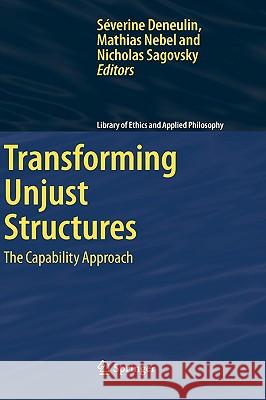Transforming Unjust Structures: The Capability Approach » książka
Transforming Unjust Structures: The Capability Approach
ISBN-13: 9781402044311 / Angielski / Twarda / 2006 / 196 str.
SEVERINE DENEULIN, MATHIAS NEBEL AND NICHOLAS SAGOVSKY TRANSFORMING UNJUST STRUCTURES The Capability Approach THE CAPABILITY APPROACH Structural injustice has traditionally been the concern of two major academic disciplines: economics and philosophy. The dominant model of economics has long been that of neo-classical economics. For neo-classical economists, human we- being is to be assessed by the availability of disposable income or according to goods consumed; it is measured by the levels of utility achieved in the consumption of commodities. Social order is fashioned by the ways consumers maximise their 1 well-being and enterprises maximise their profits. A core assumption is that all 2 commodities are commensurable: they can all be measured according to a single 3 numerical covering value, which is their price. Within this neo-classical paradigm, justice is achieved when the utility level of someone cannot be increased without 4 another person seeing his or her utility level decrease. The dominant paradigm of neo-classical economics was strongly challenged when development and welfare economist Amartya Sen received the Nobel Prize for Economics in 1998. His work offered an alternative to the neo-classical evaluation of human well-being in the utility/commodity space. The underlining philosophical intuition behind Sen s work is that the standard of living lies in the living and not in the consumption of commodities. In searching for an alternative measure of human well-being, Sen devised his capability approach."











